ASRock 939SLI32-eSATA2: ULi Dual x16 SLI
by Gary Key on March 2, 2006 12:15 PM EST- Posted in
- Motherboards
ASRock 939SLI32-eSATA2: Features
The system fan header is located below the ULi SATA ports. The ULi SATA ports are conveniently located below the M1697 chipset and to the left of the battery. The SATA ports feature the new "clamp and latch" design along with it being color-coded. The ULi M1697 chipset is passively cooled with a high rise heat sink that did not interfere with cards installed into the PCI slots. The TI TSB43AB22 IEEE 1394 chipset is located above the M1697 chipset.
The first physical PCI Express x16 connector is located next to the 12V power connector that must be used if two video cards are installed. The PCI Express x4 and second PCI Express x16 connectors are located next and followed by the (3) PCI slots.
We did not have any issues installing our EVGA 7800GTX 512MB or ATI X1900XTX video cards in the first and second x16 PCI Express slots. These dual slot configuration cards will physically render the PCI Express x4 and first 32-bit PCI slot useless. We did not have any issues utilizing these slots with video cards containing single slot cooling systems.
The ULI M1695 chipset is passively cooled with a large heat sink unit that did not interfere with any installed peripherals. However, this unit did not keep the M1695 chipset cooled properly. We typically witnessed temperatures hovering near 59c from this heat sink, although we did not notice any stability issues during load operations. We do believe additional cooling in this area is required.
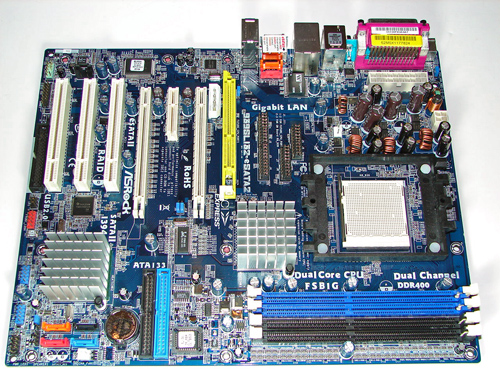
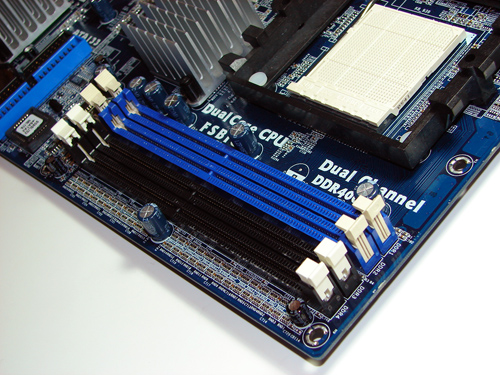
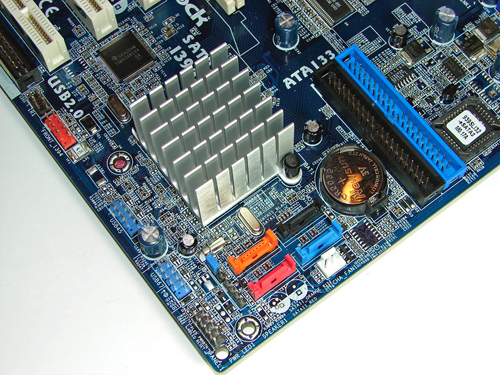
The system fan header is located below the ULi SATA ports. The ULi SATA ports are conveniently located below the M1697 chipset and to the left of the battery. The SATA ports feature the new "clamp and latch" design along with it being color-coded. The ULi M1697 chipset is passively cooled with a high rise heat sink that did not interfere with cards installed into the PCI slots. The TI TSB43AB22 IEEE 1394 chipset is located above the M1697 chipset.
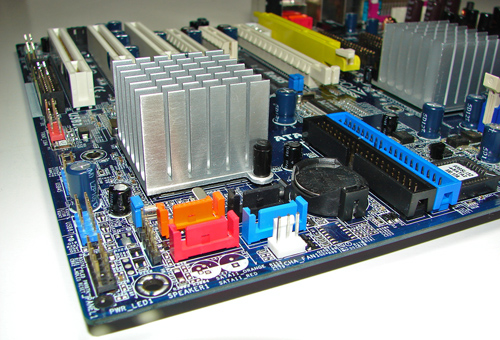
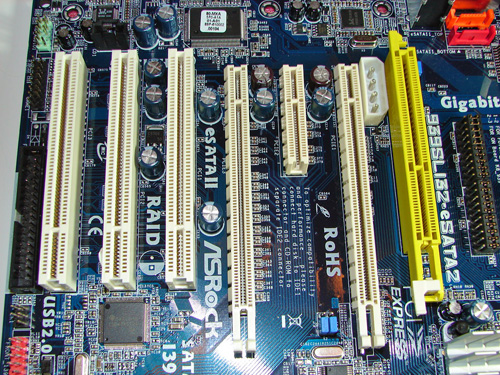
The first physical PCI Express x16 connector is located next to the 12V power connector that must be used if two video cards are installed. The PCI Express x4 and second PCI Express x16 connectors are located next and followed by the (3) PCI slots.
We did not have any issues installing our EVGA 7800GTX 512MB or ATI X1900XTX video cards in the first and second x16 PCI Express slots. These dual slot configuration cards will physically render the PCI Express x4 and first 32-bit PCI slot useless. We did not have any issues utilizing these slots with video cards containing single slot cooling systems.
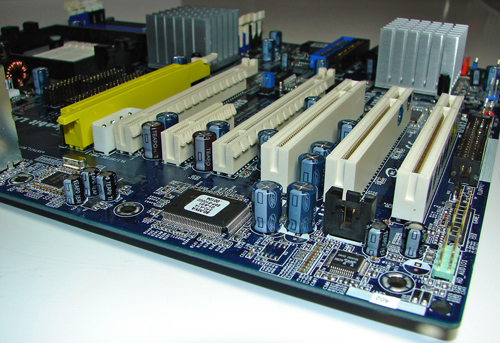
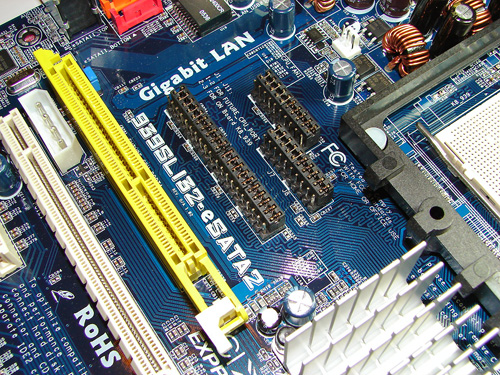
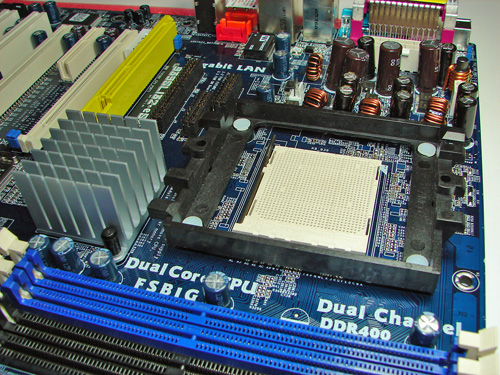
The ULI M1695 chipset is passively cooled with a large heat sink unit that did not interfere with any installed peripherals. However, this unit did not keep the M1695 chipset cooled properly. We typically witnessed temperatures hovering near 59c from this heat sink, although we did not notice any stability issues during load operations. We do believe additional cooling in this area is required.
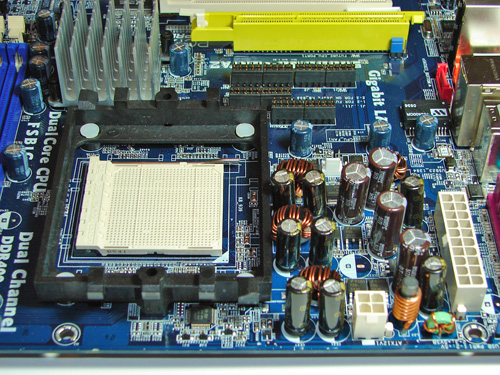
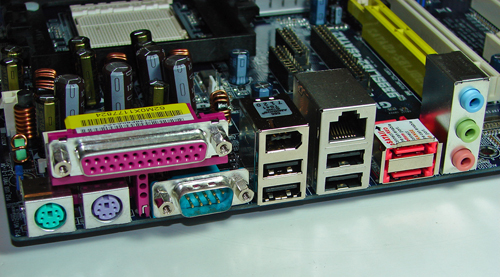










46 Comments
View All Comments
Zoomer - Tuesday, March 7, 2006 - link
This board would cannabilize sales of the premium SLI32 and xfire board that Asus sells for $150 IF it included voltage settings up to 2v vCore, 3.2v vMem, etc.They would be stupid to do it. These people will pay the $150 anyway if they don't have an easy (cheap) alternative. For the rest of us, we can get busy with a 2B pencil, solders or conductive ink. ;) And forgo the warranty on it, so if it goes boom in a year's time, you're on your own.
Nice strategy. Would AT leak the beta bios for comparison's sake? (We'll smuggle it to xs or ocwb....:D)
poohbear - Thursday, March 2, 2006 - link
and for the record the dualsata2 is a very stable mobo @ stock settings, i have to give credit where it's due, but for overclocking this company's products shouldnt even be considered.sandorski - Thursday, March 2, 2006 - link
It kinda sucks Nvidia bought out ULI, they were very innovative and really filled niche markets very well. Then again, perhaps Nvidia will let them continue doing interesting things there?Cygni - Thursday, March 2, 2006 - link
Hard to argue with that... looks like ASRock/ULi has another mega seller on their hand with this baby. But I cant help but wish it had an AGP slot thrown in between the two PCI-Ex lanes, to allow an upgrade path. Thats probably the primary reason the ULi 1695 boards have been selling so well.The IDE and SATA performance numbers are really striking in contrast to Nvidia's. I hope we see the inclusion of ULi's storage controller in future Nvidia chipsets.
All for $85... awesome.
Furen - Thursday, March 2, 2006 - link
If it had an AGP slot then it would have to use ULi's AGP tunnel + the 1697 instead of the 1695 + 1697, which would mean that it'd only have 16 PCI-e lanes for graphics. I suppose most of us wouldn't mind going for two 8x slots while in SLI but then most of us wouldn't really want SLI to begin with.JackPack - Thursday, March 2, 2006 - link
Quality doesn't seem to be bad either. Panasonic and UCC caps in there.